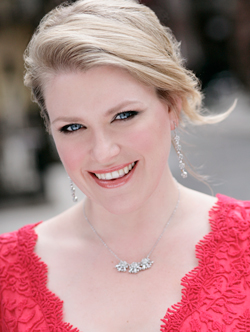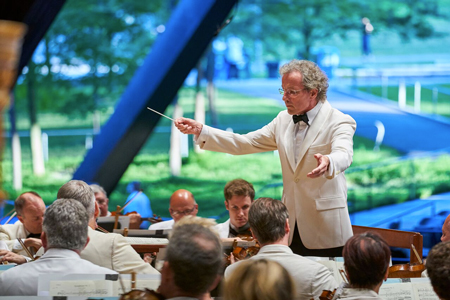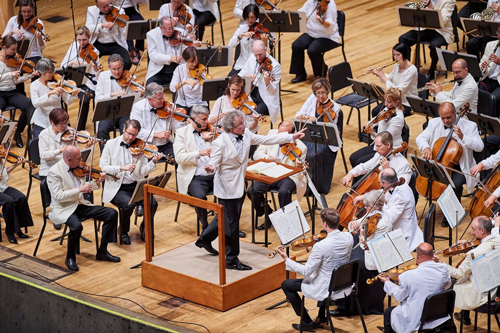by Daniel Hathaway

“A Night at the Opera,” an engaging mix of well-known and lesser-known arias, overtures, dances, and interludes, gave Wall and the Orchestra abundant material to work with. Organized in pairs of selections by Mozart, Dvorak, and Richard Strauss in the first half, and interleaving arias between instrumental works from the Italian repertory by Rossini, Mascagni, and Verdi in the second, the program was an ideal choice for a perfect summer evening.
It’s not every singer who can shift gears from Donna Anna (Don Giovanni) to Rusalka, from Arabella to Violetta (La traviata), then to Desdemona (Otello) in a single program, but Wall imbued each of her characters with a different aspect of her radiant personality as well as with various colors from her alluring vocal palette.

Welser-Möst is never so deeply engaged as when he leads operatic music, and conductor and Orchestra luxuriated both in their collaborative and solo moments. The Overture to The Magic Flute was noble and restrained, the Act II Polonaise from Russalka incandescent. “Travel Fever” and “Waltz Scene” from Intermezzo were transparent with all of Strauss’s orchestral multitasking exposed. The Overture to William Tell was distinguished by vibrant cello quartet and section playing, fine solos by English hornist Robert Walters and flutist Joshua Smith, and buoyant strings and stirring brass in the finale. The “Intermezzo” from Cavalleria rusticana was luminous, the Overture to La Forza del destino nervous and impassioned.

Speaking of surprises, which always abound during outdoor performances, the Blossom birds chirping away on the rafters of the pavilion added a delightful descant to the Mozart Overture — but where was Papageno? And toward the end of the first half, a rumbling and a crash turned many heads in the rear seats (a runaway cart took off down the lawn and struck the back wall, miraculously avoiding contact with any humans).
Photos by Kristin Hoebermann (Erin Wall) and Roger Mastroianni (Blossom).
Published on ClevelandClassical.com July 11, 2017.
Click here for a printable copy of this article



